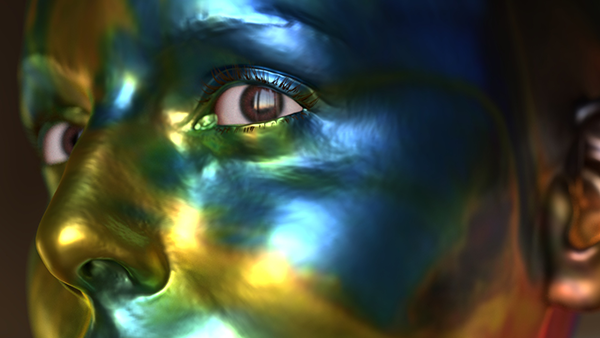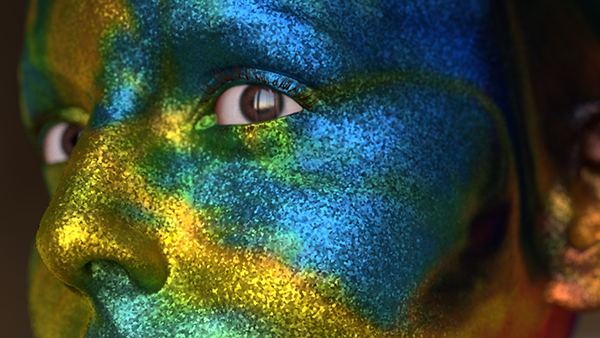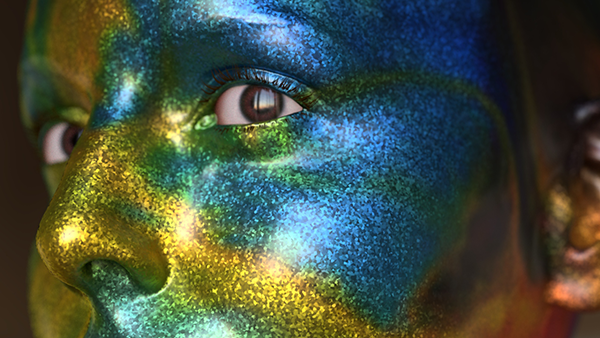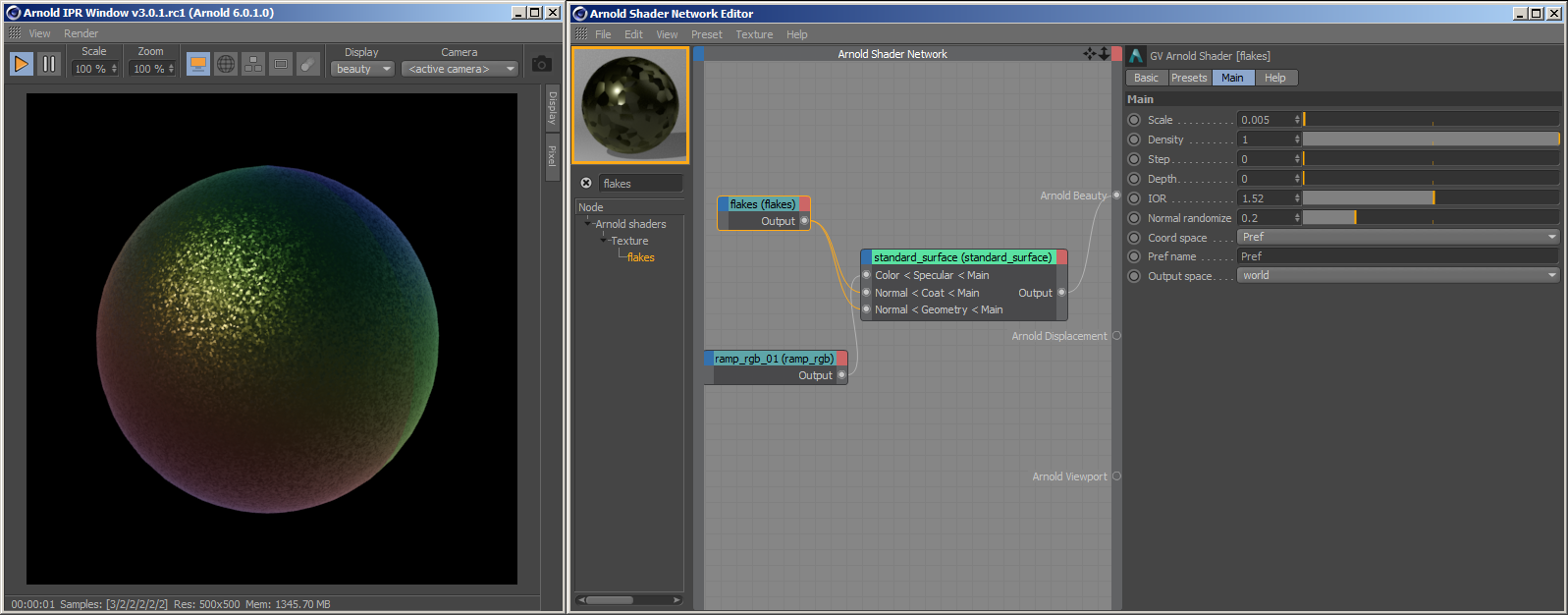Flakes Example

There are several ways to use the flakes shader, and this tutorial aims to demystify some of its uses. In this short, making-of tutorial we demonstrate how to use the flakes shader (in combination with the standard_surface) to create some glitter make up.
Specular Color
- To start off with, here we have a default standard_surface shader with a color texture map connected to the specular_color. base_weight is not necessary for this example.

Normal
- If we want variations in the color of the flaked reflection, we need to have the flakes in a lower layer (Normal - *Bump Mapping under Geometry)*. This effect is evident in materials such as metallic car paint.

Normal and Coating (Default White Color)
- If we increase the coating_weight, we just get a white coating_color (default). This effect would be useful for car paints or plastics but does not look suitable, as it is, for glitter makeup. We must also add the flakes to the coat_normal as well.

The color you assign to the coating will just tint the lower base, metal, and specular layers. The coat layer is a semi-opaque dielectric type layer that will always reflect white, no matter the color you assign it. The color of the coat layer will tint the underlying base and specular layers. For example, and somewhat counter-intuitively, a green-tinted glass does not have green reflections. It is the refraction of what is underneath the glass that is tinted green. The same thing happens with colored plastics.
Normal and Coat Normal
- Connecting the flakes into both the normal attribute and the coat_normal gives us the final result that we want. In the end, we have used the normal on both the specular and coat layers. This method makes sense. However, the appearance would also depend on how much clear enamel/oil/whatever the glitter in the makeup is mixed with.

Note: Ensure that the output_space of the flakes shader is set to world.
With car paint, the coat layer would be quite thick, giving it a smooth polished appearance that is easy to reproduce. However, with this makeup example, the coat layer would be quite thin and less polished. The normal of the coat layer would be a blend of the bumpiness of the underlying skin, the orientation of the flakes of glitter, the distribution of the makeup itself with thicker and thinner patches, and the smooth surface that the surface tension of a thin layer of liquid gives you over pretty much any rough surface. As the makeup dries and the face expresses, the surface of the coat layer could also become cracked and dulled.
A scene file can be downloaded here.

Flakes shader -> standard_surface.normal_camera. Flakes shader coord_space (object) and output_space (world).